What is Framing in Photography?
Are you a person loving and displaying photography? Are you looking for basics of framing in photography? Wonder why people display their art of photography in galleries or in exhibitions. Ever wonder why a good photographer always experiment with different angles to show views? Framous Pictures” values your time so providing all the necessary details that carries basic information about framing photos. Your how, what, why and when belongs to this article.
Photography is either very easy or very difficult as you don’t know when and what will become land mark of your collection. People always have different choices regarding photograph framing, may be what is lame for you become most important and eye catching for others.
Photography Is A Visual Art!
Let’s Talk About Framing in Photography
What is Framing Photography?
Framing is an approach helping you to focus on your subject. In your photographs, as a photographer, you try to draw attention to a particular idea or subject. You frequently strive to separate the subject from the rest of your photograph, whether it be a person, a pet, a tree, or any other thing you can imagine. You may literally gather a number of various elements from the scene to build a frame for your subject and compose your photo with it by using framing to tell a story by display, add context to a moment, and compose your shot in a best way to grab the attention.
In photography, framing photo is a method used to draw attention to the subject by blocking off distracting elements of the scene. The center of the image or one of its edges may contain frames. They may cover just one or two of the image’s edges or all four of its sides. There are several advantages to framing, despite the fact that its primary purpose is to draw the viewer’s attention to the image’s main subject. Photographers frequently create frames with branches, tunnels, arches, windows, or even people to seek attention. Frame composition contains different materials and shapes.
Use of Framing in Photograph
A compositional technique called framing uses displaying characteristics to draw attention and to emphasize the photograph’s main topic. For instance, you can frame a subject with a door, window, and piece of grass, a tree, a hole in the wall, lights, or a certain form.
By using the following strategies, you may make your photo frame better:
- Select the Subject
- Make and Understand the Context
- Prepare the Visuals of your Story
- Must Know your Focus Point and Capturing Moment
- Organize the View or Scenery in Camera accordingly
- Always Click multiple times and Choose the Best one
- Make sure you visuals are strong enough to highlight the purpose
Rules of Framing Composition:
Composition is the complete arrangement of elements for your photo frame that make up all scenes or shots together in one photograph. A photograph’s story is determined by its composition. It specifies where everything should remain, the spacing between components, and who should be bigger, more vibrant, or more colorful. Its goal is to produce a visually appealing image that also serves as a viewer’s guide. As with a book’s contents, a photograph’s composition directs the observer to begin with chapter 1 and proceed in the designated order.
Following are the rules for composing frames:
- Simplify the Scene
- Rule of Thirds (break an image into thirds (both horizontally and vertically)
- Fill up the Frame from all sides
- Diagonal lines
- View (High or Low/Horizontal or Vertical)
- Reflection
- Framing Idea
- Coloring
- Contrast
- Shaping
- Symmetrical Balance
- Depth & Layering
- Patterns & Horizons
The skeleton of the human body is analogous to composition in photography. It holds everything together, balances out the weights of different visual components, and gives the frame a dynamic appearance. Your body couldn’t operate normally if your skeleton was in disarray. A disorganized composition would also prevent your shot from telling a tale.
Elements of Photography:
- Line
- Shape
- Form,
- Texture
- Color
- Size
- Depth
Ideas for Photograph Frames:
- Doors and Windows
- Dew drops or Rain
- Heritage View
- Cultural Spots
- Natural Views
- People
- Playing Equipment
- Object photography
- Light and Shadows
- Doorway/Hallway
- Railway track
- Hill Station
- Painting framing
- Library etc.
Conclusion:
There is no such specific time for photography but one must consider time for framing it. Framing requires your hard work to check all the elements and features. Your image and displaying characteristics are the key to seek eye catching moment for audience. If you are looking for custom picture framing Perth, tap the google tab and search for Framous Pictures. Framing photography definition varies artist to artist but purpose remains constant. Experience fantastic framing with quality assurance.
- Posted In:
- Informative



Leave a Reply